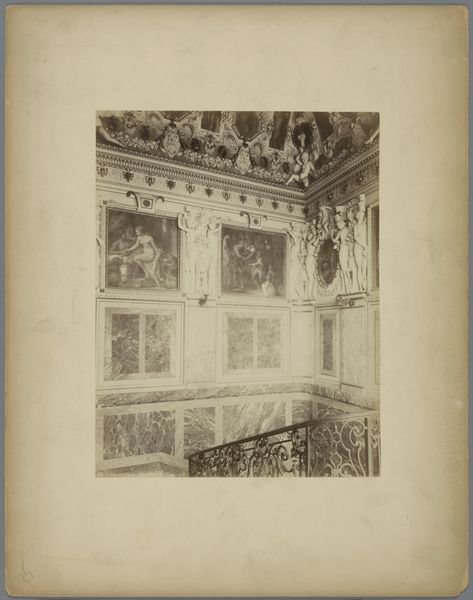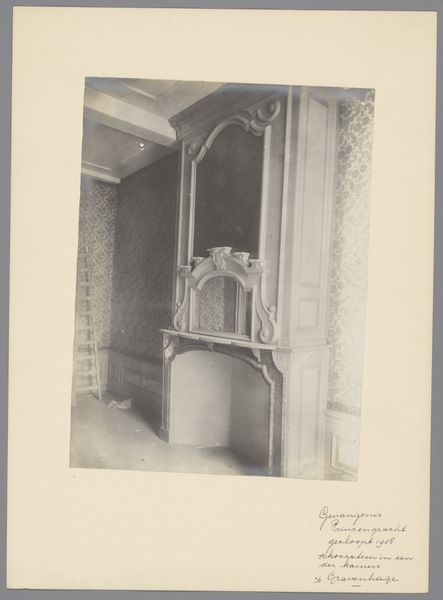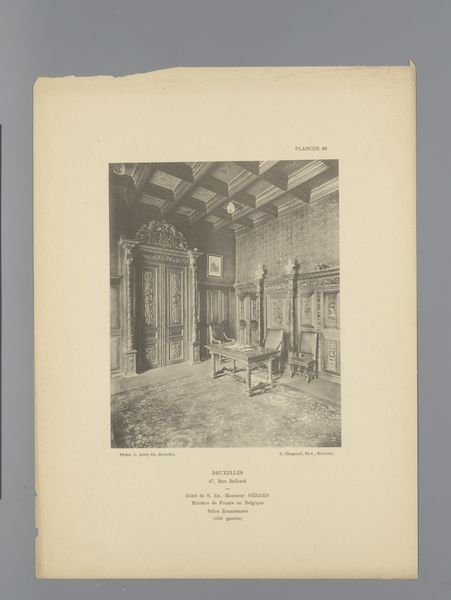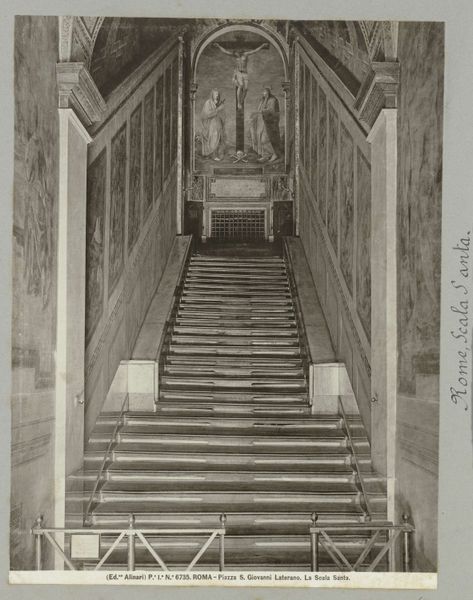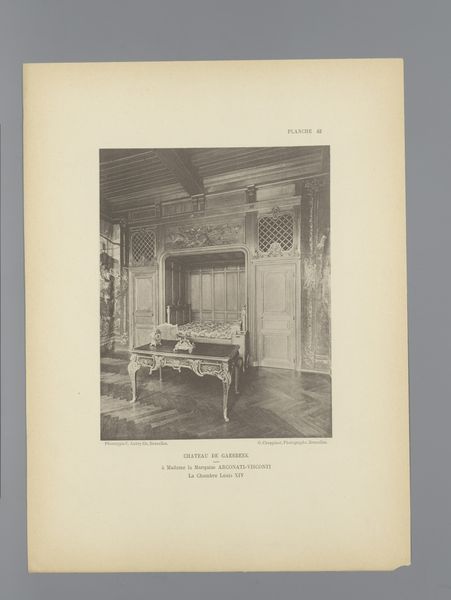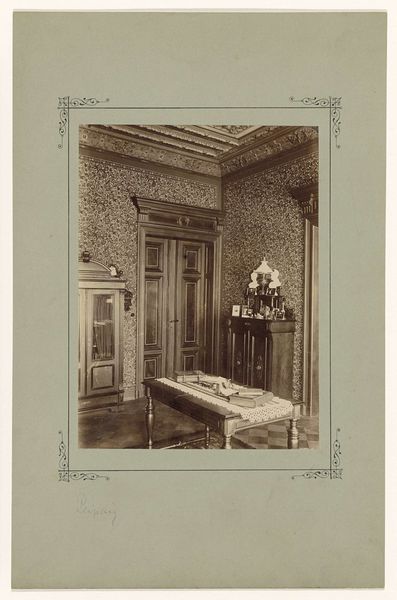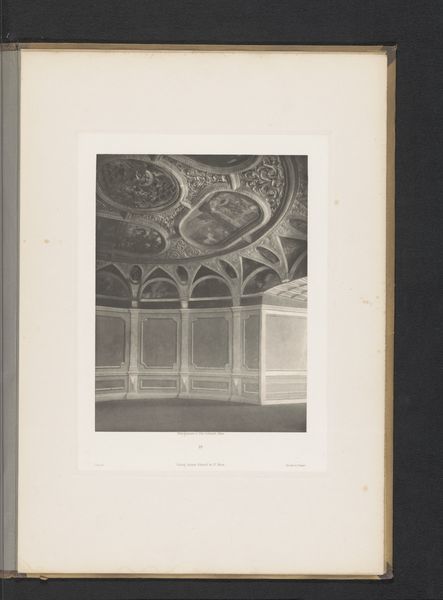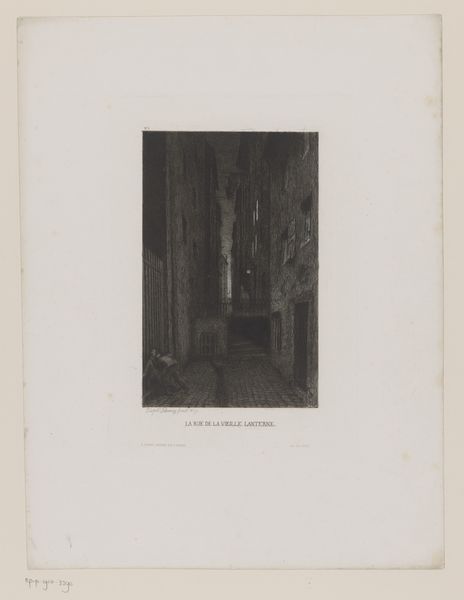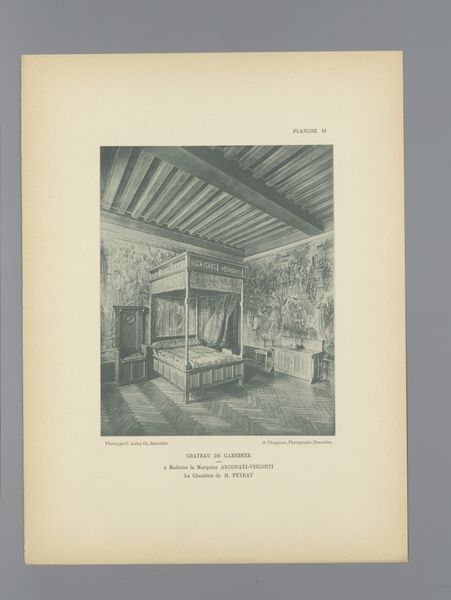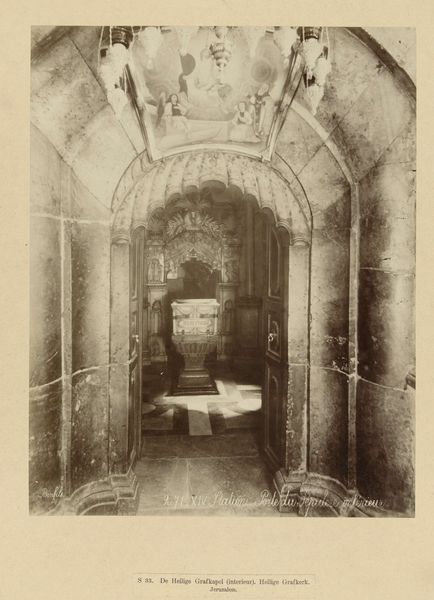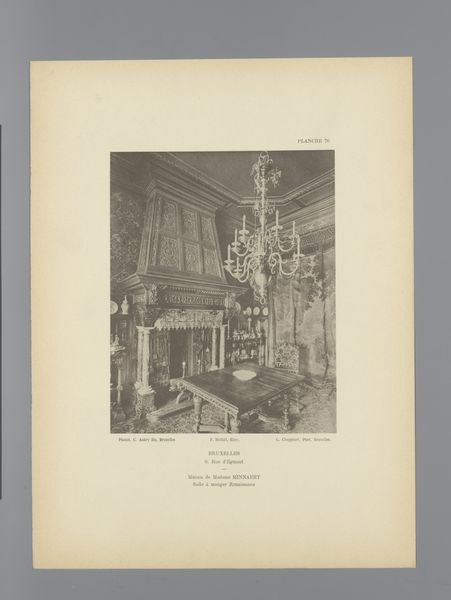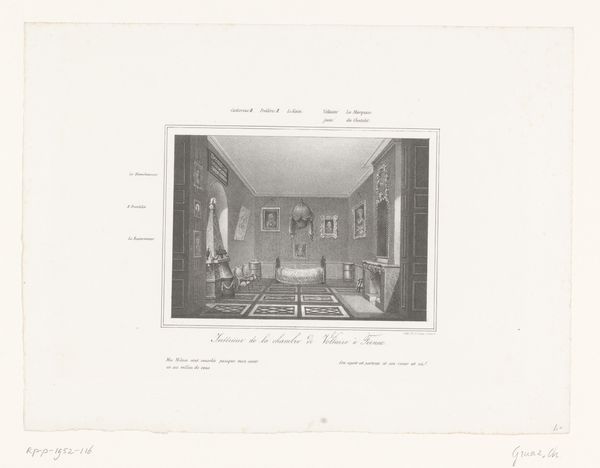
Dimensions: height 401 mm, width 312 mm
Copyright: Rijks Museum: Open Domain
Editor: We're looking at Hermann Rückwardt's 1883 gelatin silver print, "Trappenhuis van het Schloss Brühl" - the staircase of Brühl Castle. It’s a very grand, almost theatrical composition, wouldn't you say? The symmetry is striking. What do you see in this photograph? Curator: The staircase is indeed theatrical, less a functional space and more a stage. Rückwardt’s camera captures the symbolic weight embedded in baroque architecture, doesn't it? Notice the careful rendering of classical motifs, like the statuary lining the stairs, they are meant to evoke power, lineage, and control. It speaks to a desire to visually manifest authority and cultural memory. Editor: So the visual language of power… but through a photograph? Does the photographic medium itself add anything to that symbolism? Curator: Precisely! Photography in the 19th century was still somewhat novel. Here, it’s deployed to meticulously document and, in a sense, legitimize the castle's grandeur. It lends an air of objective truth, reinforcing the pre-existing symbolic order. What about the way the light plays, almost like a spotlight effect on the sculpture at the landing, does that affect your impression? Editor: Absolutely! It makes you look there first. It really emphasizes the details, almost like he’s telling you what to think. It’s interesting how the reality of the place becomes a staged presentation in this image. I'll definitely look closer next time to question the cultural weight of the symbolism. Curator: Yes, remember that all the elements have meaning and affect its viewing. This approach helps unveil stories told by what is visible and seemingly self-evident.
Comments
No comments
Be the first to comment and join the conversation on the ultimate creative platform.

